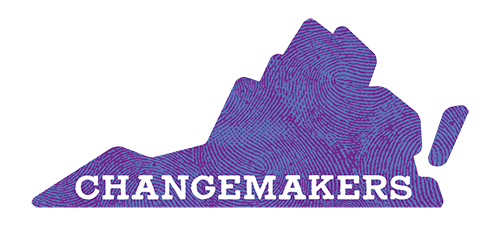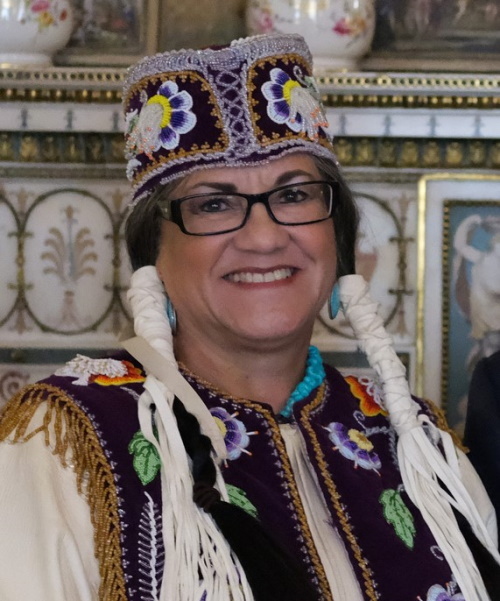Locality
King and Queen County
Occupation
Rappahannock Chief
Biography
G. Anne Nelson Richardson became chief of the Rappahannock in 1998, when she succeeded her father, Captain O. Nelson. As a child her Indian name was Princess Little Fawn. She grew up on Indian Neck, in King and Queen County. At age eighteen she was elected assistant chief. Her work on a study to establish the historical predecessors of the eight modern Virginia tribes helped the Rappahannock win official state recognition in February 1983.
In 1991 Richardson became executive director of Mattaponi- Pamunkey-Monacan, Inc., a consortium providing training and employment services for Virginia Indians. In January 1998 she was elected to her first five-year term as chief of the Rappahannock, the first woman to hold the position since early in the eighteenth century. Of the three hundred Rappahannock, about half live on or near tribal lands in Caroline, Essex, and King and Queen Counties. Richardson has diligently worked for cultural, economic, and social revitalization, including completing a cultural center and planning for housing and future tribal development.
Richardson became chair of the Native American Employment and Training Council in 2005. She campaigns for federal recognition of Virginia's documented tribes and lobbies at both state and federal levels to ensure their rights. She seeks to educate the public by dispelling stereotypes. When asked in 2000 the single thing she wanted the public to know about the Rappahannock, Richardson replied, "That my people still exist and will continue to exist. I think most people, when they think about the history of Virginia and the Indians in particular, . . . think about these things like the dinosaurs that existed and died and now we're writing about them and learning about them. But that's not the case with the tribes. They have vibrant communities that have been preserved for thousands of years."
UPDATE: The Rappahannock was one of the Virginia tribes that achieved federal recognition in 2018, when the Thomasina E. Jordan Indian Tribes of Virginia Federal Recognition Act of 2017 was signed into law.
2006 Virginia Women in History honoree, Library of Virginia and Virginia Foundation for Women.
In 1991 Richardson became executive director of Mattaponi- Pamunkey-Monacan, Inc., a consortium providing training and employment services for Virginia Indians. In January 1998 she was elected to her first five-year term as chief of the Rappahannock, the first woman to hold the position since early in the eighteenth century. Of the three hundred Rappahannock, about half live on or near tribal lands in Caroline, Essex, and King and Queen Counties. Richardson has diligently worked for cultural, economic, and social revitalization, including completing a cultural center and planning for housing and future tribal development.
Richardson became chair of the Native American Employment and Training Council in 2005. She campaigns for federal recognition of Virginia's documented tribes and lobbies at both state and federal levels to ensure their rights. She seeks to educate the public by dispelling stereotypes. When asked in 2000 the single thing she wanted the public to know about the Rappahannock, Richardson replied, "That my people still exist and will continue to exist. I think most people, when they think about the history of Virginia and the Indians in particular, . . . think about these things like the dinosaurs that existed and died and now we're writing about them and learning about them. But that's not the case with the tribes. They have vibrant communities that have been preserved for thousands of years."
UPDATE: The Rappahannock was one of the Virginia tribes that achieved federal recognition in 2018, when the Thomasina E. Jordan Indian Tribes of Virginia Federal Recognition Act of 2017 was signed into law.
2006 Virginia Women in History honoree, Library of Virginia and Virginia Foundation for Women.
File Citation(s)
Image courtesy of the Rappahannock Tribe.

